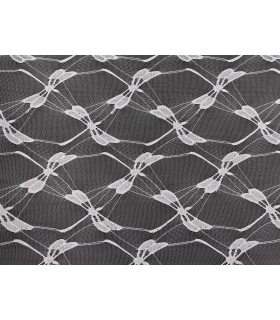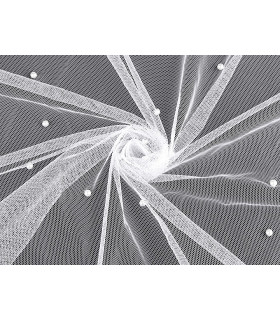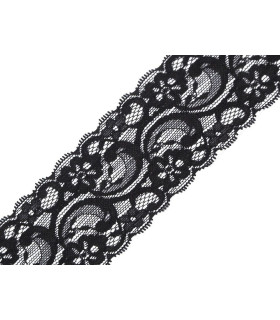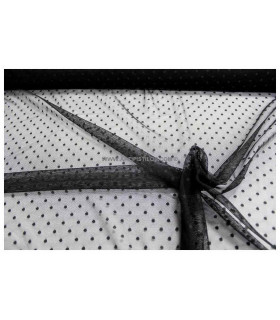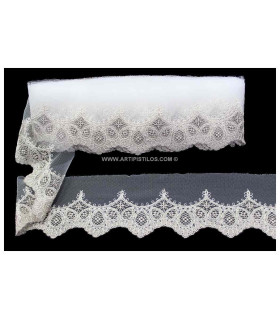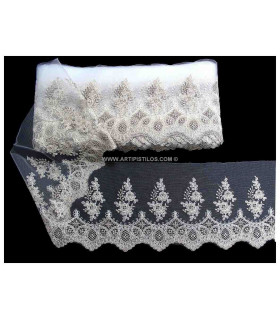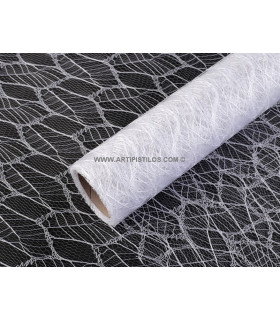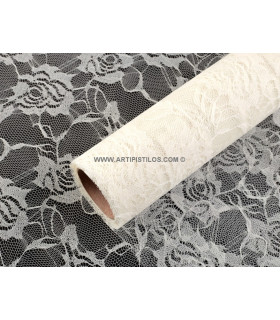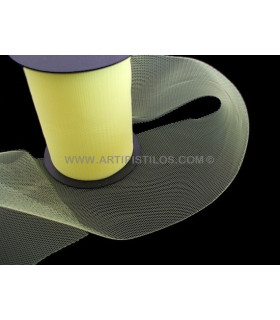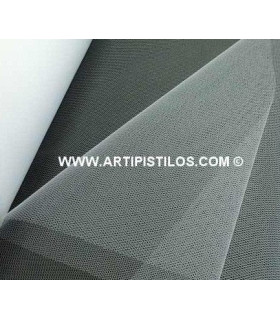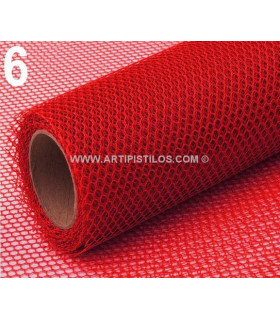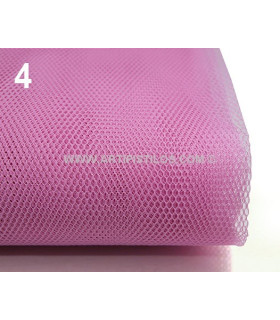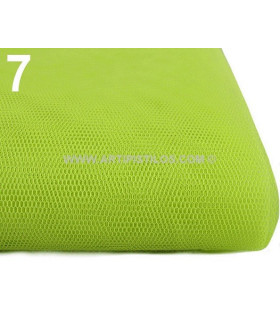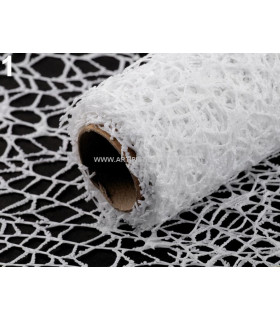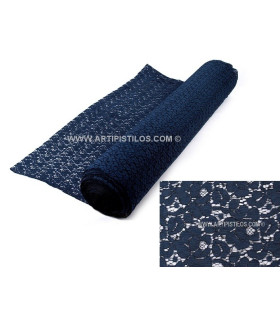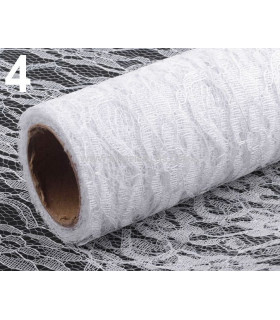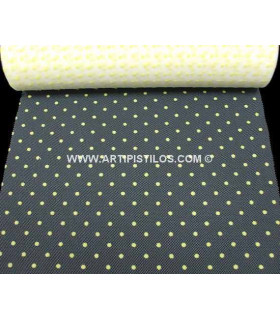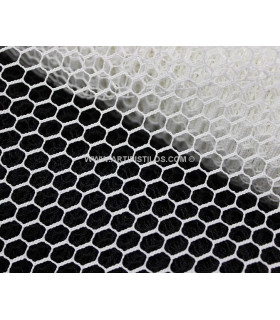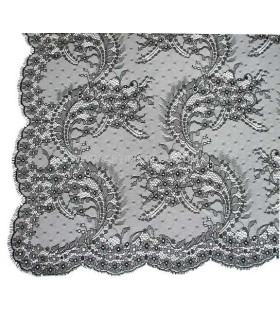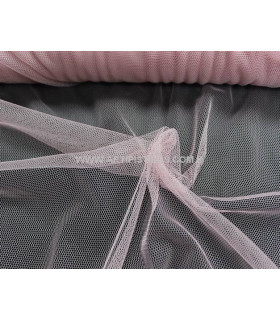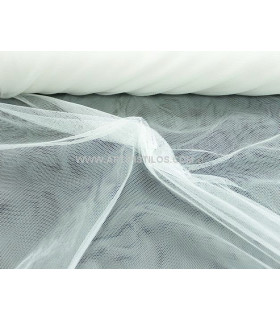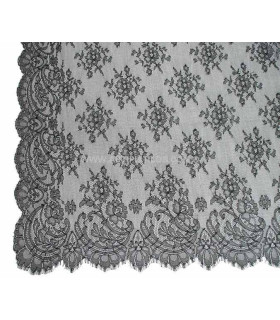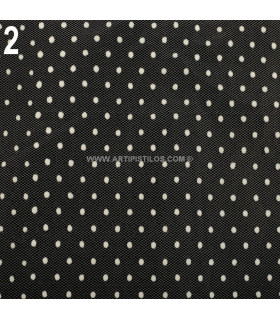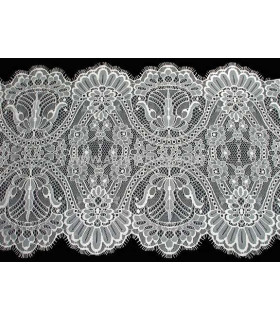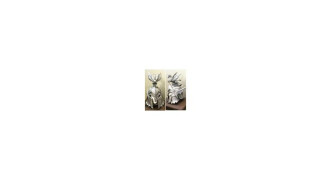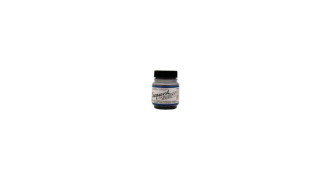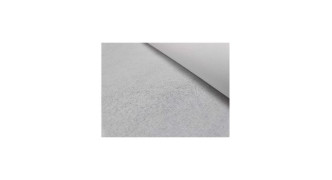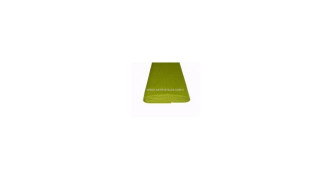BRIDAL TULLE/LACE/SPECIAL EVENTS
Fine tulle with pearls 1,60 x 1 mt.
SK380733/elastic lace 55 mm x 1 mt. - black color
SK180669/OUTLET
OUTLET
TULE POLKA 1 mt x 160 cm
TULMOTA/BRIDAL TULLE AND QUALITY BOBBIN LACE
BRIDAL TULLE AND QUALITY BOBBIN LACE
Every woman wants to look stunning on one of the most important days of her life. Materials such as bridal tulle and bobbin lace are ideal for such occasions. If you want to create accessories like lace dresses or tulle headbands for weddings, here you will find the necessary fabrics of the best quality.
One of the most sought-after types of tulle is tulle with plumeti. Plumeti tulle has a fine and light grid base, with drape, soft to the touch, and includes embroidered dots. Here you will see that we have a lot of plumeti tulle fabric in various colors and different spacing between the dots.
In addition, you can find this fabric in various materials, such as polyester tulle or cotton tulle, among others.
As for lace fabrics, we have a wide variety of designs (geometric, floral...) for you to choose the one you like the most. Whether it's for a hat, headdress, headband, or making lace underwear or lace lingerie, here you will have a choice. Don't miss our bridal veils, true works of art.
WHAT IS TULLE?
Tulle is a machine-made lace-like fabric, very light and net-shaped. The fineness of the thread gives it a softer feel than other lace fabrics.
Tulle can be made from silk, rayon, nylon, and many other fabrics. Its most well-known uses include tulle headbands for weddings, wedding veils, and bridal gowns, but it is also used for evening dresses and ballet dancers' tutus. Tulle can be dyed many colors.
The term "tulle" comes from the French city of Tulle, where large amounts of silk and lace have been produced since the 18th century.
Tulle is made by looping the weft threads around the warp threads, creating a netting with a hexagonal hole that does not roll up, warp, or fray.
WHAT IS LACE?
Lace is a decorative and transparent fabric adorned with embroidery. Its name is related to how this fabric used to be made, as it was crafted between the edges of two parallel strips of canvas, as if it were "laced" between them.
It is important not to confuse lace with embroidery, the former being the fabric that the lacemaker creates with thread and needle as if it were a support.
The historical origin of lace is in Renaissance Europe (16th century), it is not clear whether in Spain, Venice or Flanders (now Netherlands), although there are similar precedents in ancient civilizations of the East.
In the 16th and 17th centuries, lace garments such as ruffs, collars, cuffs, and curtains became fashionable. This contributed to the development of this industry, which spread throughout the main European countries.


